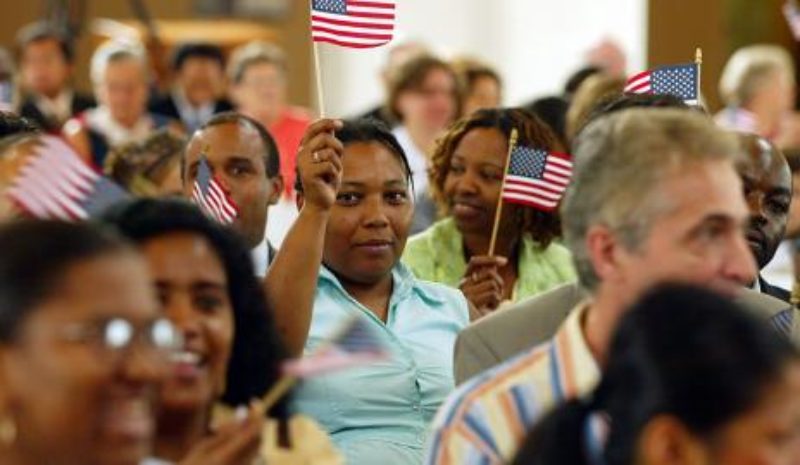A Milestone in the Immigration Court Backlog Points to Progress
There are more immigration judges on the bench today than ever before—an important step forward in the fight against the ballooning backlog, demonstrating that the Executive Office of Immigration Review (EOIR) can grow its corps of judges.
Human Rights First’s report, “In the Balance: Backlogs Delay Protection in the U.S. Asylum and Immigration Court Systems,” takes a deep look at the immigration court backlog, its causes and potential solutions. The report finds that chronic underfunding and hiring challenges have left the courts with two few judges to handle a steady flow of incoming cases. The result is wait times that stretch over three years nationally, and up to five or six years at the nation’s most burdened courts.
In June, the U.S. Department of Justice (DOJ) swore in 15 new immigration judges, bringing the total number of adjudicators to 273. “Our highest level to date,” confirmed Acting Chief Immigration Judge Michael McGoings at the swearing in ceremony. This accomplishment marks the first time EOIR has increased its judicial corps to more than the 265 judges it employed in 2011. It also indicates that EOIR may be able to stay ahead of retirement rates and can indeed grow its corps of judges.
Despite hiring progress, the backlog in immigration and asylum cases continues to increase. Faster onboarding of immigration judges and, ultimately, additional Congressional funding are still needed. As of May 2016, 492,978 cases were pending before the immigration courts, up from 480,815 just three months ago. That number that will likely top half a million cases when data is available for June 2016.
To fix the backlog the court needs 524 immigration judges, requiring Congress to fund 150 additional immigration judge teams. The House recently included funding for 25 additional immigration judge teams for fiscal year 2017—125 too few. The backlog will continue to increase until EOIR fills all currently funded positions and the backlog will not be significantly reduced until Congress provides the necessary funding to grow the court to adequate size.
Last week Senator Harry Reid (D-NV) introduced the Secure the Northern Triangle Act, which includes provisions to eliminate the immigration court backlog and funding for a total of 165 immigration judges to be added over the next three years. While unlikely to pass the current Congress, the bill importantly recognizes the need for addressing the backlog through adequate funding.
The recent hiring milestone is particularly significant for the thousands of asylum seekers buried in the immigration court backlog. Successful hiring efforts will begin to reduce wait times, giving asylum seekers in some regions hope for a sooner hearing. As documented in Human Rights First’s report, delays lengthen family separation, leaving children and spouses in danger abroad and straining family relationships.
Ammar, a Syrian refugee, is stuck deep in the immigration court backlog in Texas. Forced to leave his wife and daughters in Syria, Ammar constantly worries for their safety. “When you hear every day from your daughters that ‘we want to come.’ And they start to cry when they hear the bomb noises, and it’s … horrible.”
Until refugees like Ammar are no longer stuck in limbo for years on end, the immigration court backlog saga will continue.
